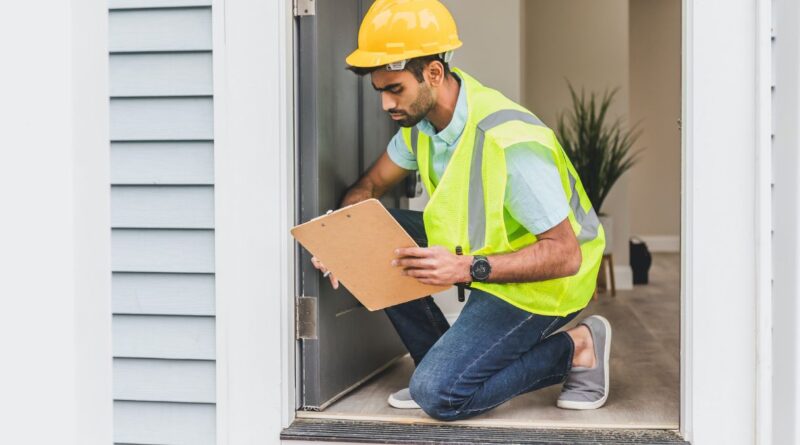Essential Home Checks Before Moving In
Moving into a new home is an exciting milestone, but before you settle in, it’s crucial to ensure everything is in top condition. Thoroughly checking your home can prevent future problems and give you peace of mind. Here are essential home checks you should perform before moving in.
Inspecting the Foundation and Structure
The first step in ensuring your new home is safe and secure is inspecting the foundation and structure. During a new construction inspection, professionals will check for any cracks or weaknesses in the foundation. This is important because the foundation supports the entire house. Look for signs of uneven floors, cracks in the walls, or doors and windows that don’t close properly. These can indicate structural issues that might need immediate attention. A strong foundation and sturdy structure are critical for the long-term stability of your home.
Checking Plumbing and Water Systems
Next, you need to thoroughly check the plumbing and water systems. Start by inspecting all visible pipes for any signs of leaks or corrosion. Turn on faucets and showers to ensure they have good water pressure and that the water flows clearly. Check the temperature and make sure the hot water heater is working efficiently. Don’t forget to inspect the toilets; they should flush properly without any leaks. It’s also a good idea to check for any damp spots or water stains on walls and ceilings, as these can indicate hidden leaks or water damage.
Evaluating Electrical Wiring and Fixtures
Electrical systems are another critical area to evaluate before moving in. Begin by testing all light switches and outlets to ensure they work correctly. Look for any exposed wires or loose fixtures, as these can be safety hazards. Check that the electrical panel is clearly labeled and that circuit breakers are functioning properly. It’s also important to verify that all smoke detectors and carbon monoxide detectors are installed and working. If you have any doubts about the electrical system, consider hiring a licensed electrician to perform a more detailed inspection.
Assessing HVAC System Performance
Your home’s heating, ventilation, and air conditioning (HVAC) system is essential for maintaining a comfortable living environment. Start by checking the thermostat to ensure it controls the temperature accurately. Inspect the furnace and air conditioning units for any signs of wear or damage. Replace filters if they appear dirty or clogged. Turn on the heating and cooling systems to verify they operate smoothly and without unusual noises. Proper ventilation is also crucial, so make sure all vents are clean and unobstructed. A well-functioning HVAC system will keep your home comfortable year-round and can help you save on energy costs.
Inspecting Windows and Doors for Leaks
One of the first areas to check in your new home is the windows and doors. Properly sealed windows and doors are crucial for maintaining energy efficiency and preventing water damage. Inspect each window and door closely for any gaps, cracks, or signs of wear. On a windy day, check if you can feel drafts coming through; this can indicate poor sealing. Also, look for water stains or damage around the frames, which can be signs of leaks. Ensuring that windows and doors are well-sealed will help keep your home warm in the winter, cool in the summer, and dry all year round.
Examining Roof and Attic Conditions
The roof and attic are critical areas that need careful inspection. Start by examining the roof for missing, cracked, or curling shingles. Any of these issues can lead to leaks and further damage. Also, check for signs of moss or algae growth, which can weaken the roof’s integrity over time. Inside the attic, look for signs of water damage, such as stains or mold. Proper ventilation in the attic is essential to prevent moisture buildup, so make sure vents are clear and functioning. Addressing any roof or attic issues promptly can prevent more serious problems in the future.
Reviewing Appliance Installation and Function
Your home’s appliances should be properly installed and in good working order before you move in. Check that all kitchen appliances, including the stove, oven, refrigerator, and dishwasher, are functioning correctly. Run each appliance through its paces to ensure they operate smoothly without any unusual noises or issues. Also, check laundry appliances like the washer and dryer. Make sure they are properly connected and vented to prevent water damage and fire hazards. Ensuring that all appliances are installed correctly and working well will save you from potential inconveniences and repair costs.
Checking Floors, Walls, and Ceilings for Defects
Lastly, inspect the floors, walls, and ceilings for any defects. Look for cracks in the walls and ceilings, which could indicate settling issues or structural problems. Pay attention to any discoloration or stains, as these can be signs of water damage or mold. Check that floors are level and free from any warping or buckling, especially in areas prone to moisture like bathrooms and kitchens. If the home has carpeting, make sure it is clean and free from stains or odors. Ensuring that these surfaces are in good condition will help you avoid future repairs and maintain a healthy living environment.
Conclusion
Performing these essential home checks before moving in can help you identify and address potential issues early, ensuring a smooth transition into your new home. By inspecting windows and doors for leaks, examining roof and attic conditions, reviewing appliance installation and function, and checking floors, walls, and ceilings for defects, you can ensure your new home is safe, comfortable, and ready for you to enjoy. Taking the time to conduct these inspections will provide peace of mind and help you settle into your new home with confidence.
Also, read this: Are Home Inspections Necessary?

